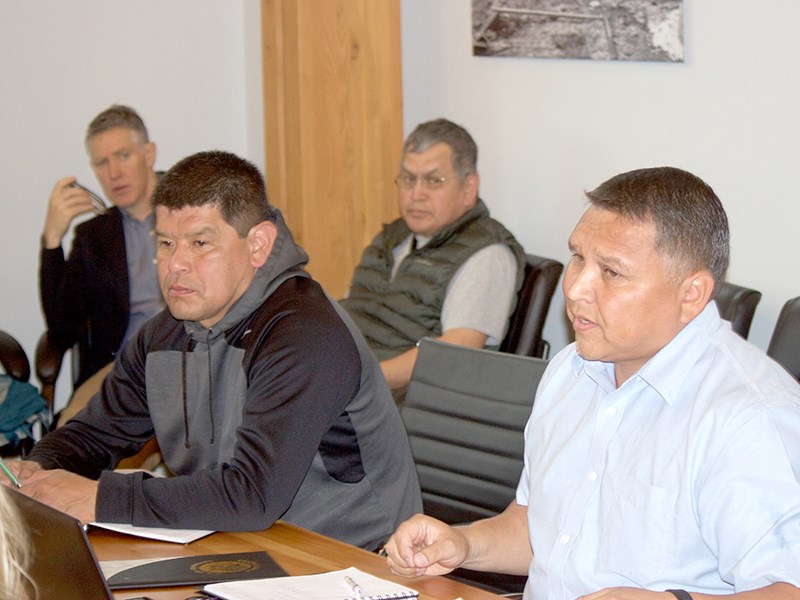Six days into its third year as a self-reliant government, Tla’amin Nation flexed its muscle with some significant moves in working with City of Powell River. Some of the positions could cause backlash from misinformed city residents, according to both sides on city and Tla’amin councils.
On April 11, Tla’amin Nation hegus Clint Williams called his executive council to meet with city councillors on his home turf at the nation’s governance house in order to demonstrate what the nation wants.
Tla’amin is proposing that it and the city dissolve PRSC Limited Partnership, a joint venture between the city and Tla’amin’s Tees'kwat Land Holdings, with each entity holding a single share.
Upon dissolution, the two sides would divide ownership of the remaining lands held by PRSC. Tla’amin would take Gibson’s Beach and request the city consent to have the property designated as Treaty Settlement Lands. The old golf course lands in Townsite and Block 56 would go to the city.
“Everything else that’s in the Tla’amin treaty is done,” said Williams.
The nation also wants to fast-track talks about service agreements with the city for a 100-hectare property, which is already treaty settlement land on the eastern boundaries of the city behind Edgehill Elementary School.
The property is forested and Tla’amin wants to log and develop it.
It is those two parcels that constituted what City of Powell River mayor Dave Formosa, called “the elephant in the room.”
Williams said he didn’t want to get into a “big reconciliation discussion.” But because the nation is catching up with modern self-government after 150 years of being under the authority of the Indian Act, “I just want to talk about the restoration of balance,” he added.
On the scale of things, Tla’amin needs revenue.
“We need to build and we have no real tax base at the moment,” said Williams.
Recognizing the special and mutually beneficial relationship the two governments enjoy, Formosa said he understands Tla’amin’s need to be self-sufficient, but at the same time, stressed council’s responsibility to protect the city.
“I have a hard time with a different government, with a different jurisdiction right in the middle of the city,” said Formosa. “Not saying that we can't get there. The service agreement might give us comfort that we all agree works for everybody.”
City councillor Karen Skadsheim said she understood Formosa’s concerns about jurisdictional authority.
“I hear the mayor's fears that we have zoning and bylaws within the city,” said Skadsheim, “and if we have a piece of land that's operating under different bylaws and has different zoning, that's a fear and a concern.”
Skadsheim added that Tla’amin’s development within city boundaries would have to be harmonious with Powell River’s zoning and residents.
Both sides said they believe everything can be resolved based on mutual respect and cooperation, but it might be a tougher task overcoming fears of city residents who might believe Tla’amin is coming to take their property, which was expressed when Tla’amin acquired its lands in Lund.
“The fears that are there, I understand them,” said Williams. “There was a sentiment that ‘evil’ Tla'amin was coming in to take over Lund and everybody was going to be kicked out of their houses. We put those fears to rest.”
Williams added that working through fears is not a big deal and presents an easy challenge.
The foundation for everything, he said, is an existing document signed in 2003 between the city and Tla’amin that contains the framework.
“I had all of these wonderful combative pieces about aboriginal rights and title and I started thinking ‘I don't have to, we have the community accord,’” said Williams.
The accord was written as a framework for reconciliation, according to Williams, “before reconciliation was a buzzword.”



